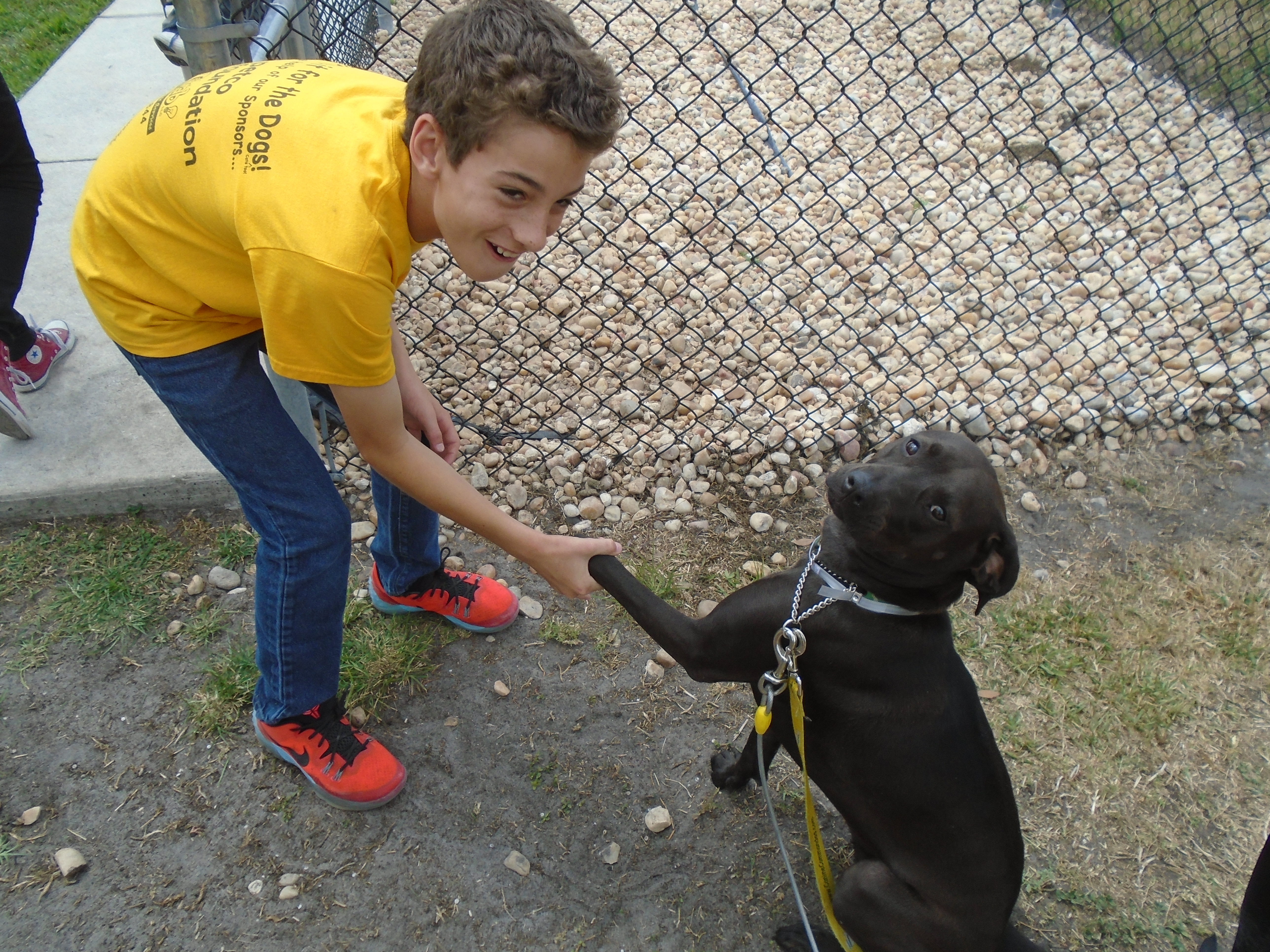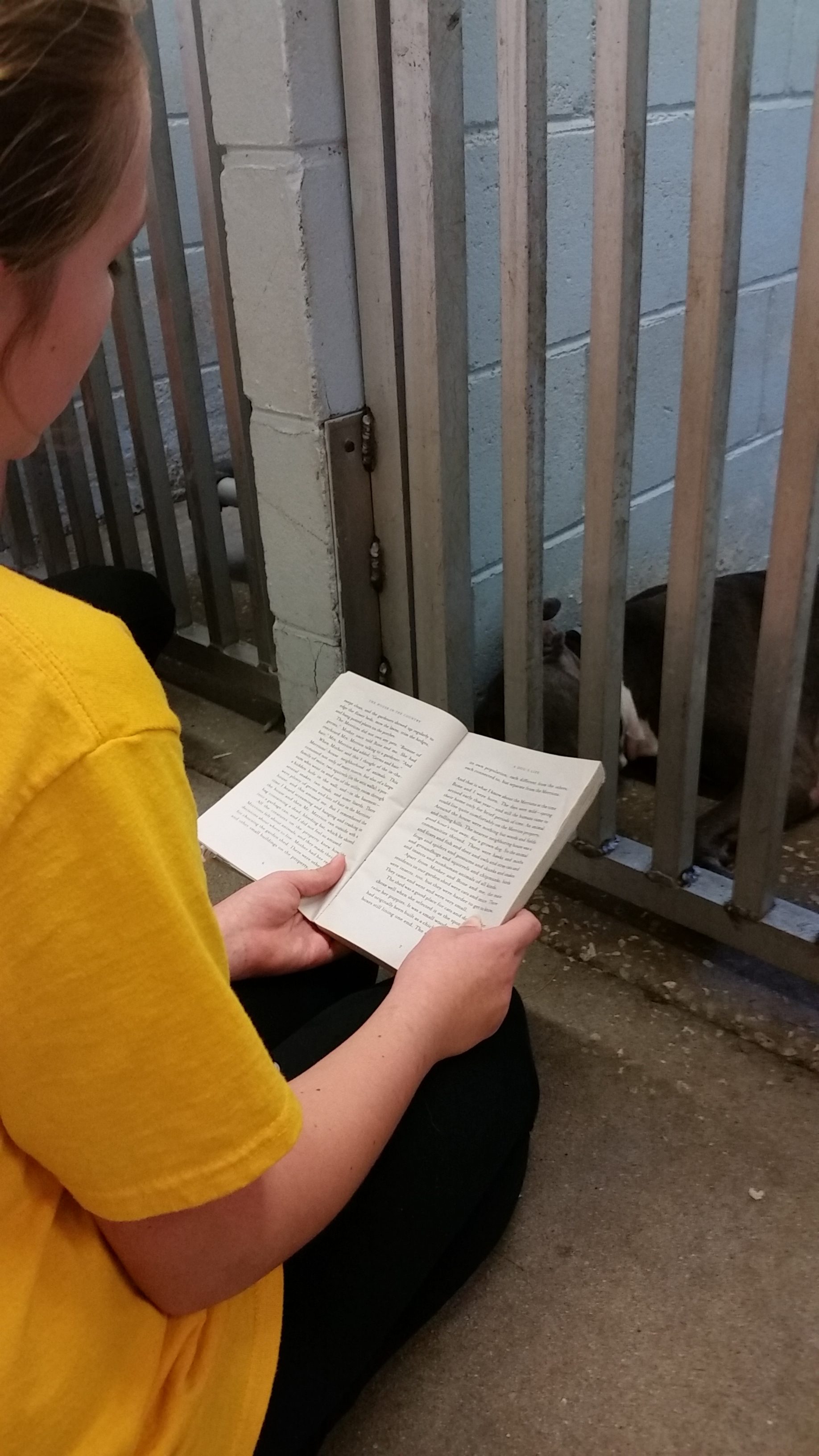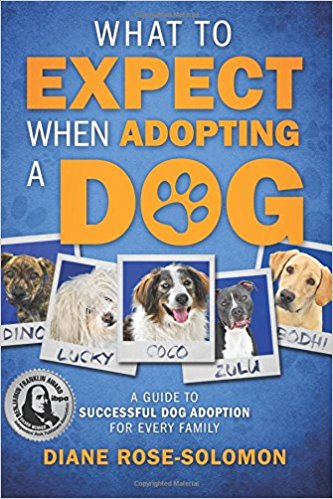
Welcome to my new interview series. Over the coming weeks I will be introducing you to giant-hearted women and men who are leaders in so many areas of the pet and animal rescue industries. They have all contributed in some way to What to Expect When Adopting a Dog and I’m delighted for you to get to know them a little better here. Without further ado…
I had the great good fortune of meeting Virginia Hamilton at the Women in the Pet Industry annual conference a few years ago. We hit it off immediately given our shared love for animals and humane education. In addition to being a public school teacher of gifted children, she founded Canine Commandos, an organization that guides students to teach basic obedience skills to shelter dogs, helping make the dogs more adoptable and providing the students with memorable hands-on life skills as well as academic gains through reflective classroom projects. I loved interviewing Virginia because as many times as we’ve connected in person or online, I never heard her whole story. It’s awesome. Plus, she shares some fabulous tips for getting acquainted with and training a new dog. Enjoy!
DRS: How did Canine Commandos come to be?
VH: As a teacher of gifted students, we required the students to engage in community service.
 We did the canned food drives and collections for homeless human shelters, but I wanted to find something that was memorable and sustainable; something that would get the kids excited! I was watching Animal Planet channel when a dog obedience trainer stated that the public overlooks many shelter dogs for adoption due to lack of training. With basic command training for minutes a day, he said we could improve the behaviors helping the shelter dogs find new homes. I knew that this was a win-win since our county shelter was a kill shelter and this is something we could do to help improve our community.
We did the canned food drives and collections for homeless human shelters, but I wanted to find something that was memorable and sustainable; something that would get the kids excited! I was watching Animal Planet channel when a dog obedience trainer stated that the public overlooks many shelter dogs for adoption due to lack of training. With basic command training for minutes a day, he said we could improve the behaviors helping the shelter dogs find new homes. I knew that this was a win-win since our county shelter was a kill shelter and this is something we could do to help improve our community.
DRS: And you didn’t just sit with that information- you took action, Virginia! How does your business help both animals and people?
VH: Shelter dogs receive up to two hours of human bonding with our elementary students through hands-on training, kennel clicker training, and reading to the dogs and cats. Not only do the animals receive much-needed attention, but the students learn C.H.E.C.K. (compassion, humanity (my favorite word), empathy, caring, kindness). The students learn that it is important to give back to the community and put someone else’s needs before their own.
DRS: That’s really beautiful. We know it makes a difference too!
What was your original connection with animal rescue.?

VH: I have been volunteering at our county’s shelter since 2003 which is no longer a kill-shelter since our sheriff recently took it over; we have more than a 95% live release rate. Since Canine Commando’s first grant in 2008, we started training at the Humane Society and the SPCA. I started volunteering in the community with an organization called B.A.R.C. (Brevardians Against Racing Canines), but our organization lost that battle. I then joined Brevard Aiding SpaceCoast Project, Inc as their Education Director supporting spay/neuter of pit bulls. Canine Commandos formed before joining Brevard ASAP but due to ASAP’s encouragement to provide humane education in the schools, I formed Aim Humane where teachers can bus to the shelter to read to the dogs or check out class sets to teach in the classroom with ready-made lesson plans.
DRS: I love that you have multiple ways for students to get involved including training and educational options. Do you have a favorite pet or animal story?
VH: Yes, many, but I will share a particular story about “Johnny.” As you know, most of the animals in the shelters are “pit bulls.” I put pit bulls in quotes because these dogs don’t follow the “don’t judge a book by its cover” attitude. We can thank media stories for the plight of this breed which has proven to be the best dogs we train. So, getting back to the question, one Commando noticed this breed throughout the shelter and learned why so many were without homes. The numbers of pit bulls upset him. After school, he went straight to his grandfather’s home and pleaded to neuter his pitbull explaining what he had learned. The grandfather neutered his dog. Providing humane education should be implemented in our schools. Reaching our youngest to make changes in our world is valuable.
DRS: I hear stories like that all the time. I know I learn so much from my kids when they come home from school. It makes perfect sense for our kids to learn about this stuff too. Can you offer any professional tips to my readers?
VH:
1. Learn animal body language. If we choose a dog to train who has its tail between its legs, we won’t allow the students to train her for fear of a bite. With socializing cats, the students are not allowed to bother the cat if it is in a kitty condo as this may be a sign that the cat wants alone.
2. When training a dog, make sure she masters the “watch me” command before teaching any other commands. Just like a teacher in a classroom calls on a student for eye contact to get a concept across, so does the dog need to give her full attention.
3. Don’t immediately start training the dog. Let the dog get comfortable with the new people in her life. Give her treats freely. Talk to her softly. Pet her gently (do not put your face close to hers). Then once she shows how happy she is, start training.
DRS: Great tips, Virginia. And of course, when in doubt, always consult a professional.
What’s next up for you and Canine Commandos?
 VH: Canine Commandos just become a nonprofit, 501c3, in 2017. This move allows us to accept funds through any means possible since school districts have certain guidelines and allowances. We are hoping to expand to other districts and nationwide. Still looking for our “Hairy Dogmother” to help make this dream come true.
VH: Canine Commandos just become a nonprofit, 501c3, in 2017. This move allows us to accept funds through any means possible since school districts have certain guidelines and allowances. We are hoping to expand to other districts and nationwide. Still looking for our “Hairy Dogmother” to help make this dream come true.

DRS: I love it! Where might any Hairy Dogmothers reading this learn more about you and Canine Commandos?
VH: Please visit www.CanineCommandos.org.
DRS: Is there anything else you would like for people to know?
VH: Can you imagine the changes kids can make in a shelter animal’s life? The bond is like no other, like peanut butter and jelly. Both child and animal benefit. A reflective experience for the child and a new home for the animal.


3 comments
I love this! I’m honored you chose to write our story! Thank you, Diane!
You are so welcome, Virginia. I love the work you do and I also love sharing it with others!
Perfect Virginia – you’re work is so important. I know how passionate you are about animals and this will help many of them.
Comments are closed.